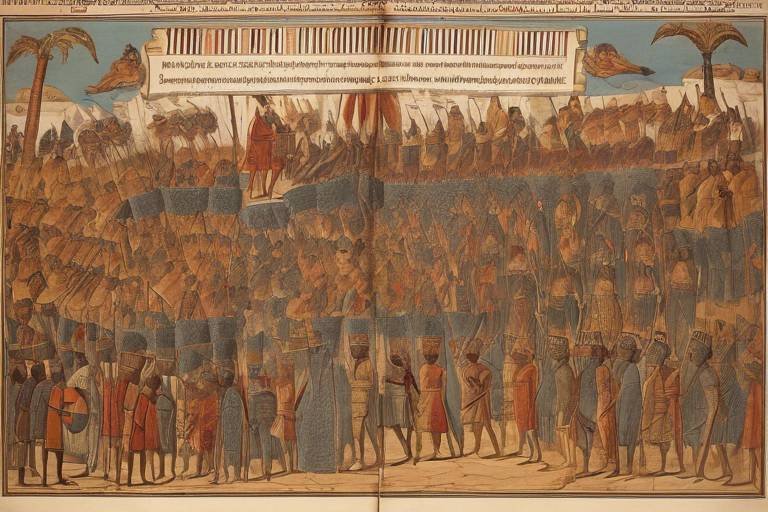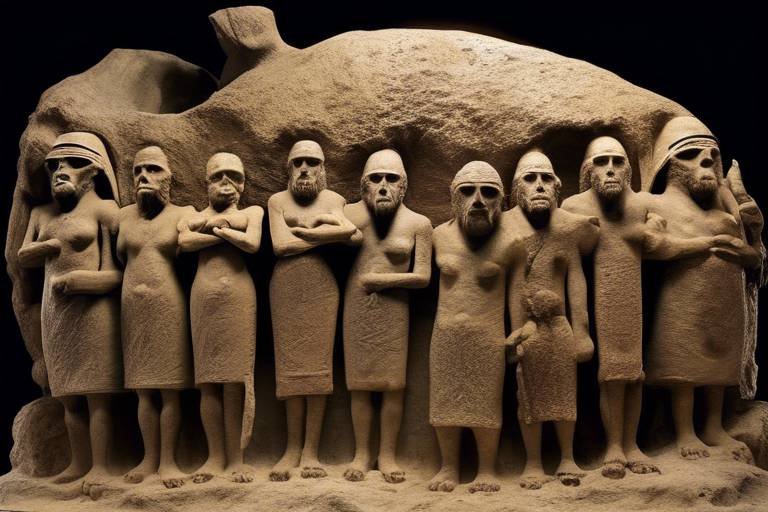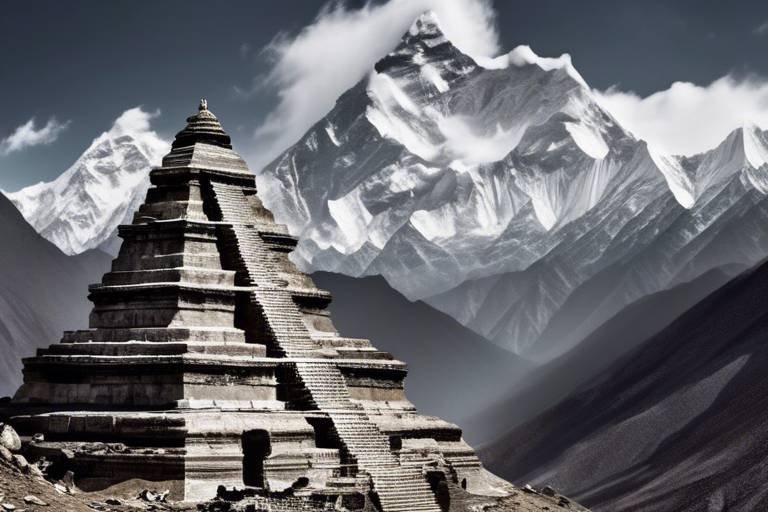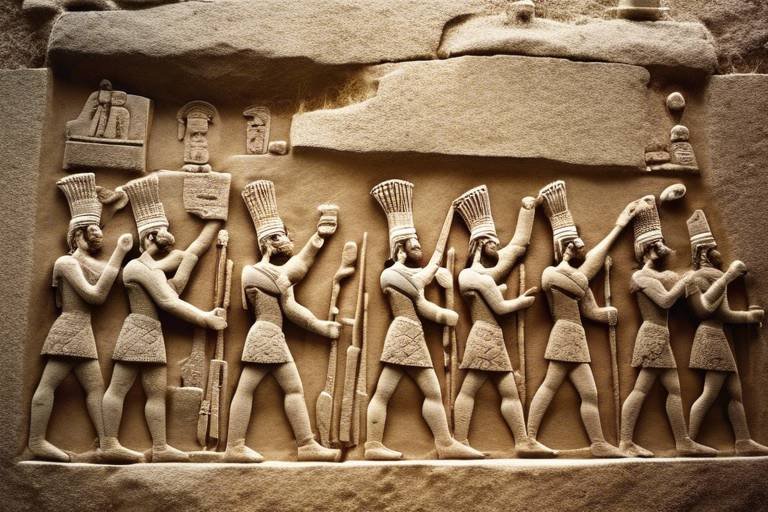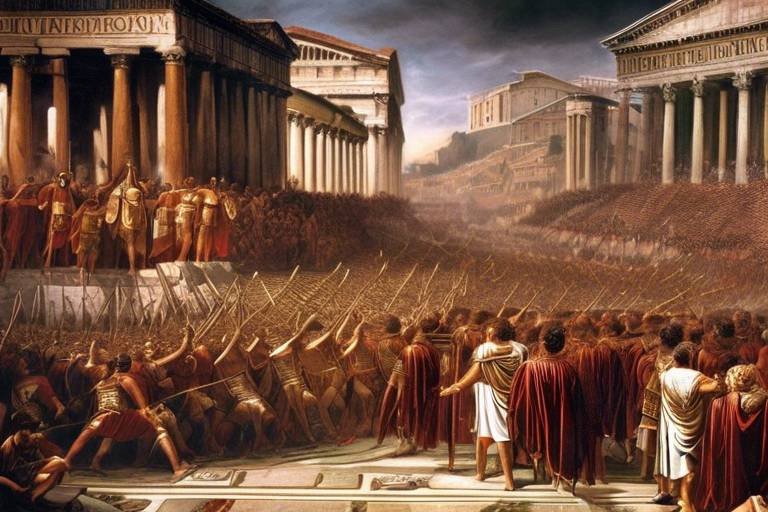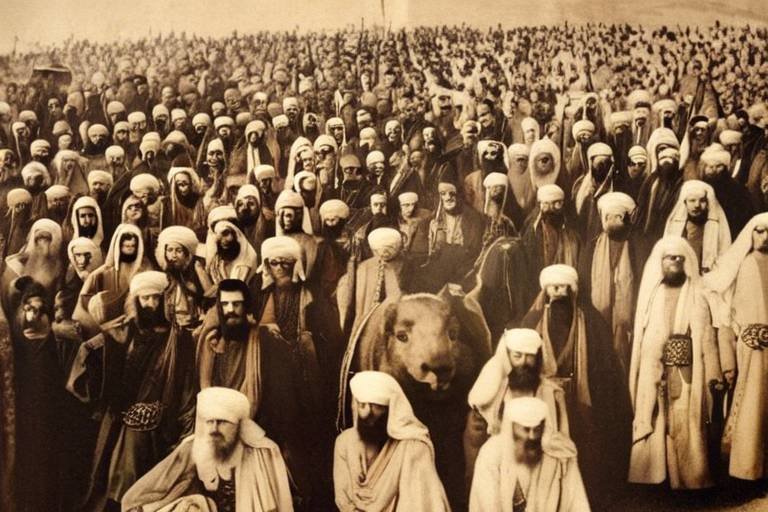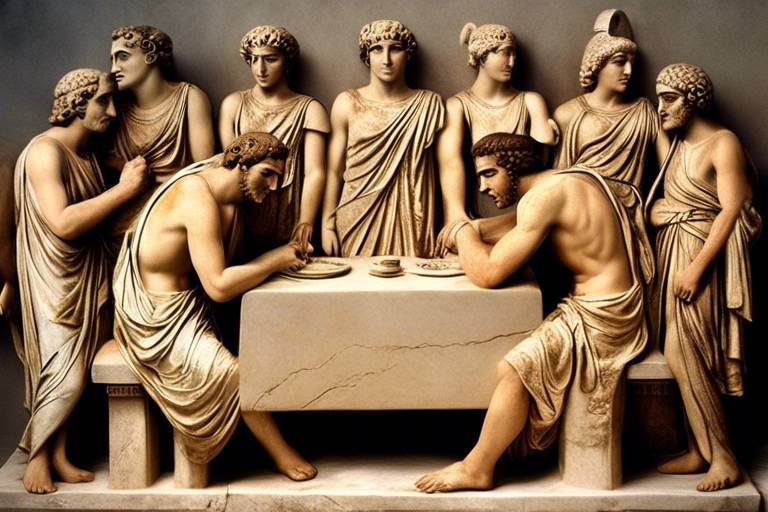The Cultural Richness of the Inca Empire
The Inca Empire, known for its rich cultural heritage, offers a fascinating glimpse into the diverse aspects of ancient South American civilization. From awe-inspiring architecture to intricate artistry, profound religious beliefs, and advanced agricultural practices, the Inca civilization flourished with a unique blend of tradition and innovation.
One of the most remarkable features of the Inca Empire is its extraordinary architecture. Structures like Machu Picchu and Sacsayhuamán stand as testaments to the ingenuity and skill of the Inca people. What sets their architecture apart is the precision with which they fit together massive stones without the use of mortar, showcasing their advanced engineering abilities and distinctive architectural style.
Delving into the realm of art and pottery, the Inca civilization reveals a mastery of craft techniques and a keen eye for detail. Their textiles, ceramics, and metalwork boast intricate designs and vibrant colors, reflecting a deep artistic creativity that has stood the test of time. Each piece tells a story of cultural richness and artistic finesse.
Religion and mythology played a central role in Inca society, shaping their spiritual beliefs and daily practices. From their reverence for nature to the worship of the sun god Inti, the Inca people held sacred rituals and ceremonies to honor their deities. Sites like Coricancha served as focal points for religious devotion, highlighting the spiritual depth of their civilization.
At the core of the Inca Empire lay a complex social structure that defined the roles and relationships within the society. From the emperor at the pinnacle to nobles, commoners, and slaves, each had a distinct place in the hierarchy. Women played crucial roles in various aspects of life, and kinship ties held communities together with a sense of unity and belonging.
The Quechua language, spoken by the Inca people, served as a unifying force and a means of communication across the empire. Their use of quipus, a system of knotted cords, for record-keeping and communication further exemplifies their innovative approach to language and information management.
Innovations in agriculture and technology set the Inca civilization apart, with terraced farming, irrigation systems, and advancements in metallurgy and textiles contributing to their prosperity. Their expertise in medicine and healing practices also showcased their holistic approach to well-being and sustainability.
Throughout the year, the Inca people celebrated a myriad of festivals and ceremonies that reflected their deep connection to nature, community, and spirituality. These colorful events marked important occasions, honored their gods, and united the population in shared traditions and cultural expressions.
The legacy of the Inca Empire endures in the modern-day Andean cultures, leaving a lasting impact on art, language, agriculture, and the preservation of ancient traditions. Their influence resonates through the ages, reminding us of the richness and resilience of a civilization that thrived amidst the stunning landscapes of South America.

Inca Architecture
Exploring the diverse cultural aspects and traditions of the ancient Inca civilization that flourished in South America, including their art, architecture, language, religion, and social structure.
The architectural marvels of the Inca Empire continue to captivate the world with their grandeur and precision. The Inca people, without the use of mortar, constructed magnificent stone structures that stand as a testament to their advanced engineering skills and unique architectural style. One of the most iconic examples is Machu Picchu, a city perched high in the Andes, and Sacsayhuamán, a fortress with massive stone walls that fit together like a puzzle. These structures not only showcase the Inca's mastery of stone masonry but also their deep connection to the natural landscape.
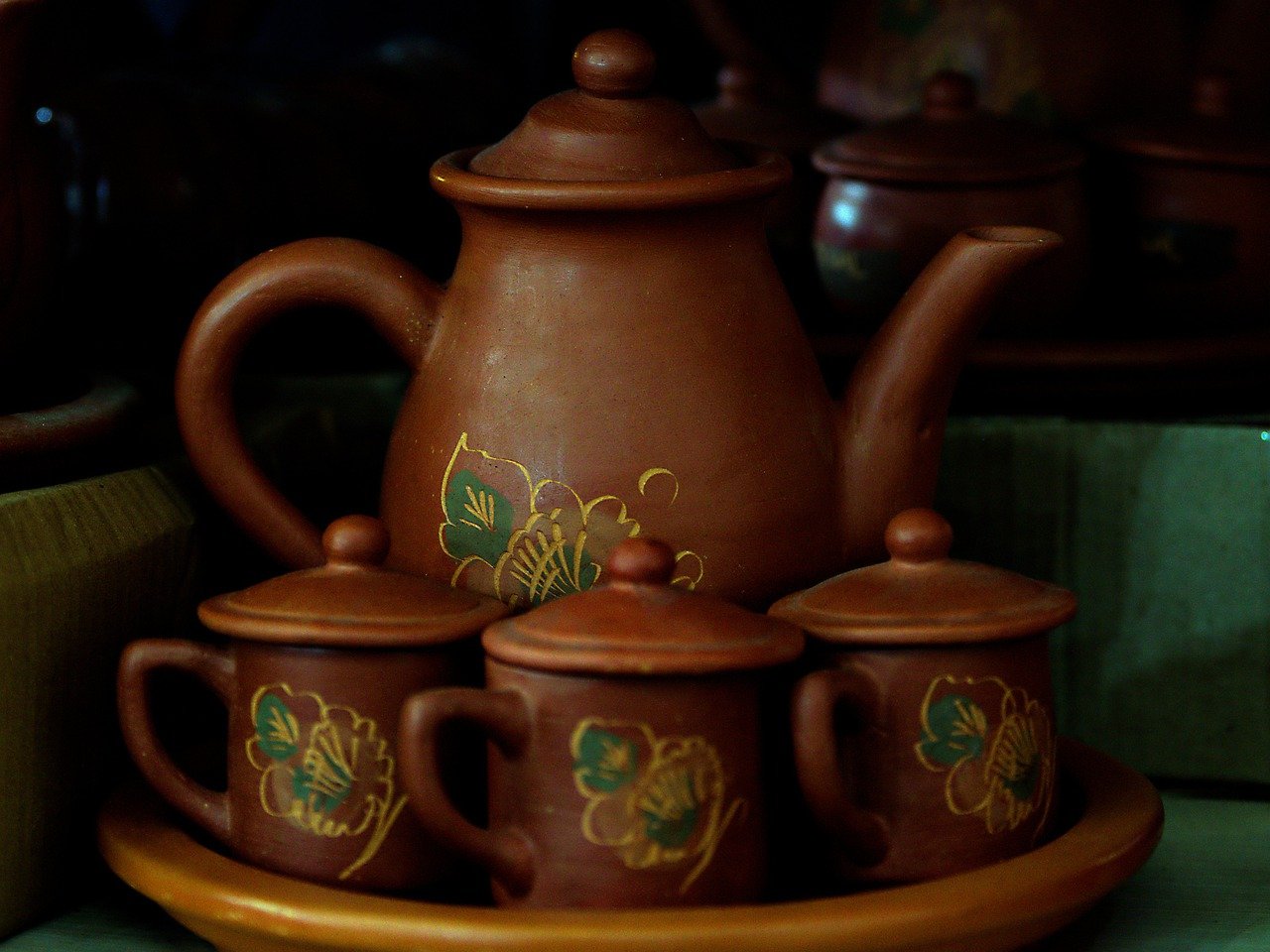
Inca Art and Pottery
The Inca civilization was renowned for its exceptional artistic skills and craftsmanship, particularly in the realms of art and pottery. Their creations reflected a deep connection to their cultural beliefs and traditions, showcasing intricate designs and vibrant colors that mesmerized all who beheld them. Inca textiles, ceramics, and metalwork were not merely objects; they were expressions of the Inca people's creativity and mastery of various craft techniques.
One of the most striking features of Inca art was the attention to detail and symbolism present in every piece. Textiles woven by Inca artisans displayed complex patterns and motifs that held significant meaning within their society. These textiles were not just garments but also served as a form of communication, conveying stories, status, and cultural identity through their intricate designs.
Inca pottery, on the other hand, showcased the skill and precision of Inca potters in creating vessels that were both utilitarian and aesthetically pleasing. The intricate decorations on Inca pottery often depicted scenes from daily life, mythology, and religious beliefs, providing insight into the rich tapestry of Inca culture.
Moreover, the use of vibrant colors in Inca art and pottery added a sense of liveliness and energy to their creations. The bold hues used by Inca artists reflected the vibrancy of their culture and the importance they placed on aesthetics in their everyday lives.
It is fascinating to consider how the art and pottery of the Inca civilization not only served as decorative objects but also as a means of preserving their cultural heritage and passing down stories and traditions from generation to generation. Each piece of Inca art and pottery was a testament to the creativity, skill, and cultural richness of this ancient civilization.

Inca Religion and Mythology
Exploring the mystical realm of unveils a tapestry of spiritual beliefs intertwined with the natural world. The Inca civilization held a deep reverence for the celestial bodies, particularly the sun, which they considered the divine source of life and energy. Their religious practices were intricately woven into everyday life, with rituals and ceremonies dedicated to honoring the gods and maintaining harmony with nature.
The Inca pantheon consisted of a multitude of deities, each representing different aspects of life and the cosmos. Inti, the sun god, held a central position in their religious framework, symbolizing power, fertility, and prosperity. Other important deities included Viracocha, the creator god, and Pachamama, the earth goddess, embodying the duality of life and death, creation and destruction.
One of the most sacred sites in the Inca Empire was Coricancha, the Temple of the Sun in Cusco, where elaborate ceremonies and offerings were made to honor Inti and seek his blessings for abundant harvests and protection. The Inca priests, known as amautas, played a crucial role in conducting religious rites and interpreting the will of the gods through divination and sacrifices.
Mythology also played a significant role in shaping the spiritual beliefs of the Inca people. Legends and oral traditions passed down through generations recounted the origins of the universe, the exploits of heroic figures, and the eternal struggle between light and darkness. These myths served not only as entertainment but also as moral lessons and cultural touchstones, reinforcing the values and beliefs of the Inca society.
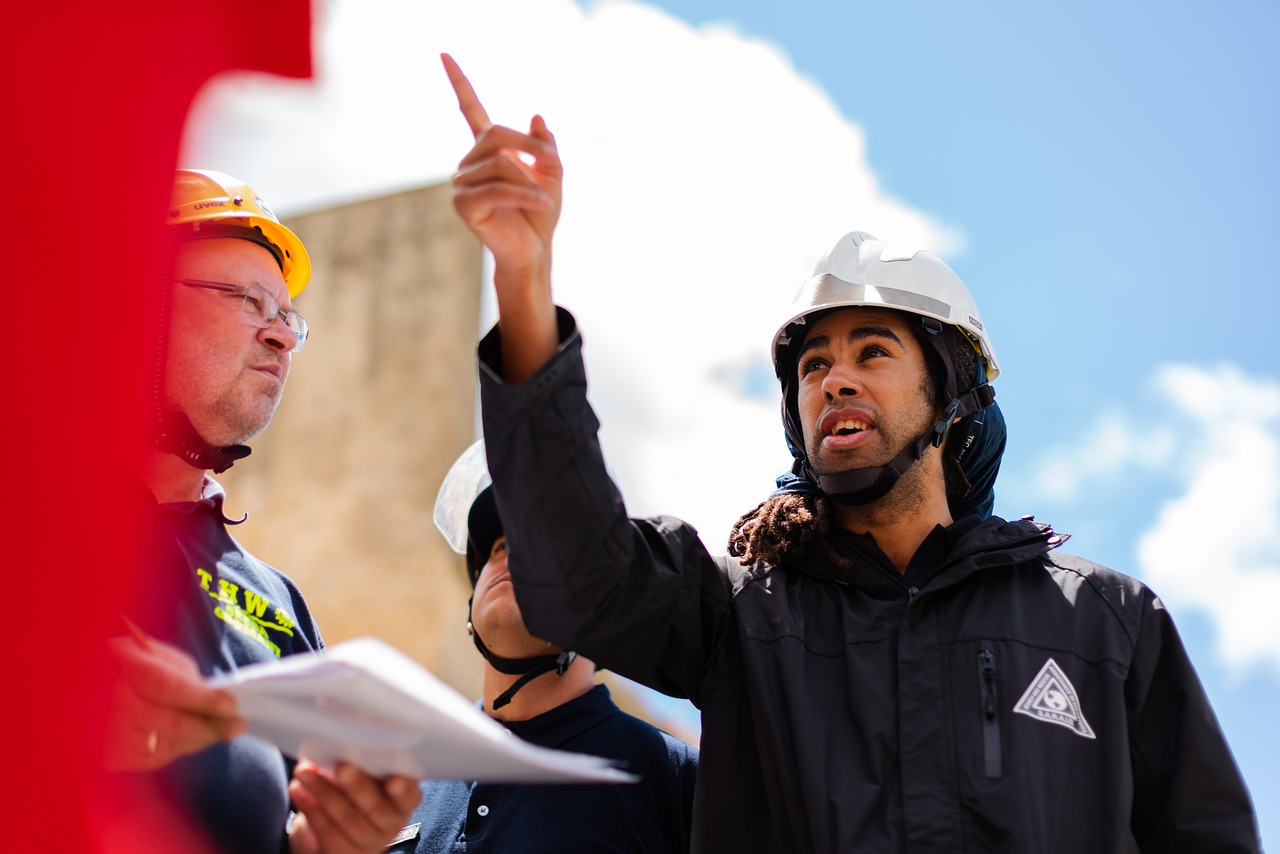
Inca Social Structure
Exploring the diverse cultural aspects and traditions of the ancient Inca civilization that flourished in South America, including their art, architecture, language, religion, and social structure.
The social structure of the Inca Empire was highly hierarchical, with the emperor holding the highest position of power. Below the emperor were the nobles, who held significant influence and wealth. Commoners made up the majority of the population, engaging in various occupations such as farming, weaving, and construction. At the bottom of the social hierarchy were the slaves, who were often prisoners of war or individuals in debt.
Women in Inca society played essential roles in both the household and the community. They were responsible for tasks such as weaving textiles, preparing food, and caring for children. Some women also held positions of power, particularly as priestesses or in roles related to religious ceremonies.
Family and kinship were fundamental aspects of the Inca social structure. Lineage and ancestry were highly valued, with extended families living together in large compounds known as "ayllus." These kinship groups shared resources, worked the land collectively, and participated in community rituals and ceremonies.
The Inca society had a well-defined system of labor and tribute, with each individual expected to contribute to the empire's prosperity. Tribute in the form of goods, services, or labor was paid to the state, supporting the functioning of the empire and the elite classes.
Despite the hierarchical nature of Inca society, there was a sense of community and mutual support among the people. Festivals, ceremonies, and communal work projects fostered a sense of unity and cooperation, reinforcing the social bonds that held the empire together.
The social structure of the Inca Empire was not static but evolved over time, adapting to changing circumstances and incorporating new elements as the empire expanded and encountered different cultures. This flexibility and resilience contributed to the longevity and stability of the Inca civilization.
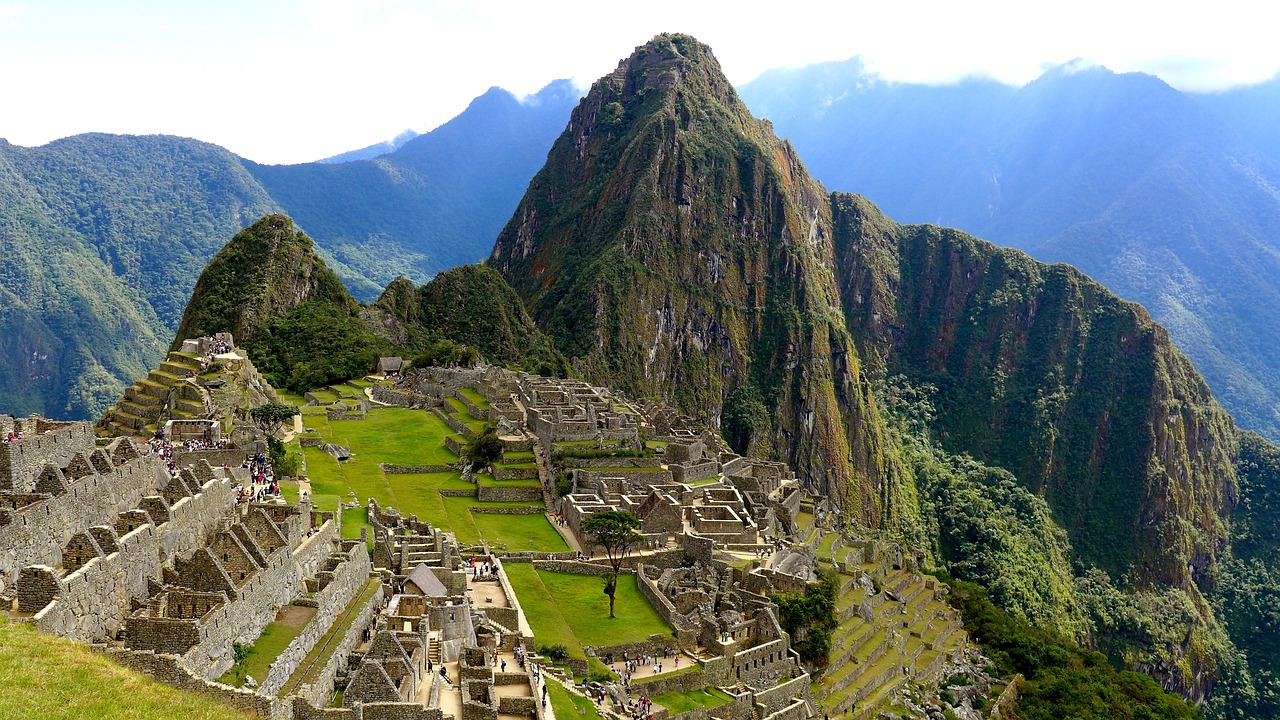
Inca Language and Communication
Exploring the diverse cultural aspects and traditions of the ancient Inca civilization that flourished in South America, including their art, architecture, language, religion, and social structure.
The Inca civilization had a unique language known as Quechua, which played a significant role in their communication and cultural identity. Quechua was spoken by the Inca people and influenced many modern Andean languages, showcasing the lasting impact of their linguistic heritage. In addition to spoken language, the Inca also used a fascinating system of knotted cords called quipus for record-keeping and communication. These quipus served as a sophisticated method of encoding information, ranging from numerical data to historical records, demonstrating the advanced communication techniques of the Inca society.
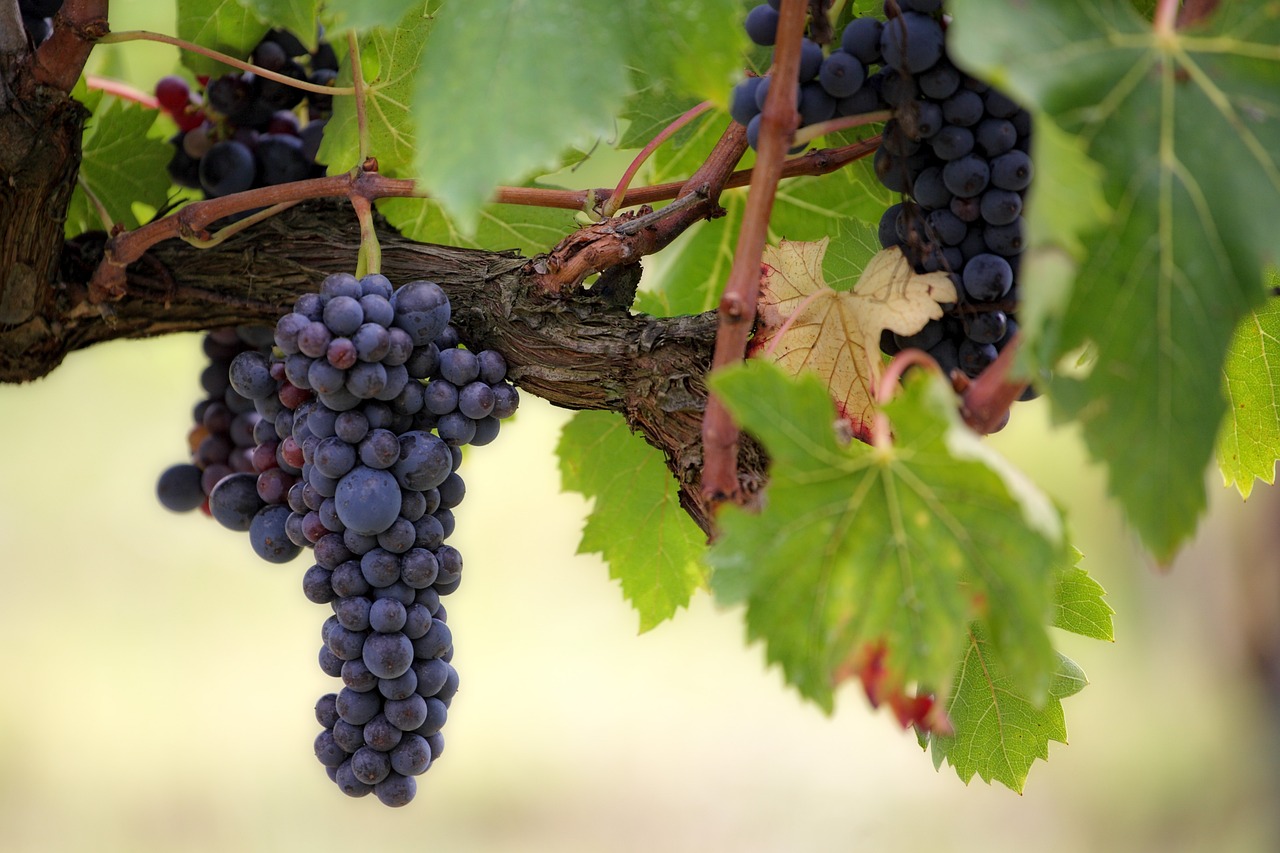
Inca Agriculture and Technology
When delving into the fascinating realm of , one cannot help but marvel at the innovative practices employed by this ancient civilization. The Inca people were pioneers in the field of agriculture, utilizing advanced techniques to cultivate the challenging terrain of the Andes Mountains.
One of the most remarkable aspects of Inca agriculture was their mastery of terraced farming. By sculpting intricate terraces into the steep mountainsides, the Inca were able to create flat, fertile plots of land for growing crops. These terraces not only prevented soil erosion but also maximized the use of limited arable land, allowing the Inca to sustain their large population.
In addition to terraced farming, the Inca also developed sophisticated irrigation systems to channel water from mountain springs to their crops. These intricate networks of canals and aqueducts ensured a reliable water supply for agriculture, even in the arid high-altitude regions where they resided.
Furthermore, the Inca civilization made significant advancements in metallurgy, producing intricate gold and silver artifacts that showcased their mastery of metalworking techniques. Their expertise in textiles was also unparalleled, with finely woven fabrics adorned with intricate designs and vibrant colors.
Moreover, the Inca people demonstrated a deep understanding of medicinal plants and their healing properties, using a wide array of herbs and botanicals for medicinal purposes. Their knowledge of herbal medicine was passed down through generations, contributing to their overall well-being and longevity.
Overall, the agricultural and technological achievements of the Inca civilization not only sustained their society but also paved the way for future innovations in the Andean region. Their ingenuity and resourcefulness continue to inspire awe and admiration, underscoring the enduring legacy of the remarkable Inca Empire.

Inca Festivals and Celebrations
The Inca civilization was known for its vibrant festivals and celebrations that played a significant role in their cultural life. These colorful events were not only occasions for merrymaking but also held deep spiritual and social significance for the Inca people. Festivals were a way to honor their gods, mark important events, and celebrate the agricultural seasons that sustained their society.
One of the most famous Inca festivals was Inti Raymi, the Festival of the Sun, held annually to worship Inti, the sun god. During this grand celebration, the Inca emperor would lead ceremonial rituals to ensure a bountiful harvest and prosperity for the empire. The entire city of Cusco would come alive with music, dance, and elaborate processions, showcasing the Inca's reverence for the sun as the source of life and energy.
Another important festival was the Capac Raymi, the Festival of the Inca Emperor, which honored the ruler as the divine descendant of the sun. This event highlighted the emperor's role as the intermediary between the people and the gods, emphasizing the Inca belief in the divine right of kingship and the emperor's pivotal position in maintaining cosmic order.
Throughout the year, the Inca people also celebrated various agricultural festivals tied to the planting and harvesting seasons. These ceremonies involved offerings to Pachamama, the earth mother, and other agricultural deities to ensure fertility of the land and a successful crop yield. The Inca's deep connection to nature was reflected in these rituals, emphasizing their harmonious relationship with the environment.
Additionally, the Inca held ceremonies to commemorate important events in their history, such as military victories or the inauguration of new rulers. These gatherings served as a way to unite the community, reinforce social bonds, and pass down oral traditions and historical narratives to future generations.
Overall, the Inca festivals and celebrations were integral to the cultural identity and social cohesion of the empire. Through these colorful and meaningful events, the Inca people expressed their spirituality, shared their collective history, and reaffirmed their connection to the natural world. The legacy of these festivals continues to resonate in modern Andean cultures, highlighting the enduring impact of the Inca civilization on the region's rich cultural heritage.
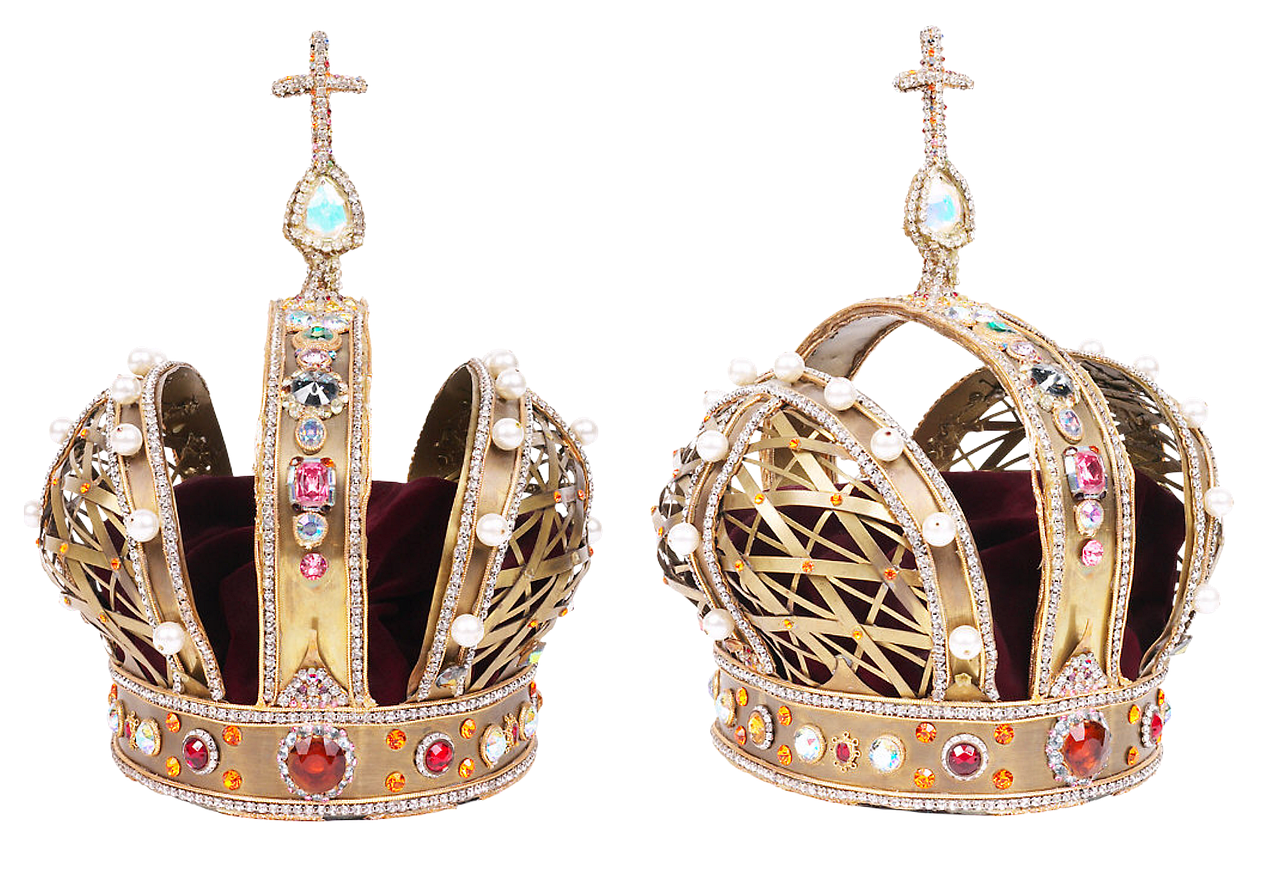
Legacy of the Inca Empire
The legacy of the Inca Empire continues to resonate through the ages, leaving an indelible mark on the cultural tapestry of modern-day Andean societies. The remarkable achievements and traditions of the Inca civilization have endured the test of time, influencing various aspects of art, language, agriculture, and heritage preservation.
One of the most significant legacies of the Inca Empire is its profound impact on art and architecture. The intricate designs and advanced engineering skills displayed in structures like Machu Picchu and Sacsayhuamán serve as a testament to the ingenuity and creativity of the Inca people. Their architectural marvels have inspired awe and admiration, shaping the artistic landscape of the region.
Furthermore, the Quechua language, spoken by the Inca people, has left a lasting imprint on modern Andean languages. The linguistic legacy of the Incas is evident in the vocabulary and grammar of contemporary indigenous languages, preserving a vital link to the past and fostering cultural continuity.
In the realm of agriculture, the innovative farming techniques pioneered by the Inca civilization, such as terraced farming and irrigation systems, have had a lasting impact on agricultural practices in the Andean region. Their mastery of agricultural technology continues to influence farming methods and sustainability efforts in the present day.
Moreover, the Inca Empire's reverence for nature and spiritual connection to the cosmos have shaped the cultural and religious beliefs of Andean communities. The worship of ancestral deities, sun rituals, and sacred sites like Coricancha remain integral to the spiritual identity of the region, underscoring the enduring legacy of Inca religion and mythology.
Lastly, the legacy of the Inca Empire is also evident in the preservation of ancient traditions and heritage. The rich tapestry of Inca festivals, ceremonies, and communal celebrations has been passed down through generations, fostering a sense of cultural pride and community cohesion. These vibrant cultural practices serve as a living tribute to the enduring legacy of the Inca civilization.
Frequently Asked Questions
- What are some famous examples of Inca architecture?
Two of the most renowned examples of Inca architecture are Machu Picchu and Sacsayhuamán. These structures showcase the advanced engineering skills of the Inca people, who built them without the use of mortar.
- What is the significance of quipus in Inca communication?
Quipus were a system of knotted cords used by the Inca civilization for record-keeping and communication. They played a crucial role in maintaining order and recording important information in the absence of a written language.
- How did the Inca civilization honor their gods?
The Inca people held colorful festivals and ceremonies to honor their gods, marking important events and agricultural seasons. These celebrations were a vital part of their cultural traditions and community spirit.
- What was the social structure of the Inca Empire like?
The Inca Empire had a hierarchical society with the emperor at the top, followed by nobles, commoners, and slaves. Women also played important roles, and kinship was highly valued in their social structure.
- How did the Inca civilization contribute to modern-day Andean cultures?
The legacy of the Inca civilization can be seen in various aspects of modern-day Andean cultures, including art, language, agriculture, and the preservation of ancient traditions. Their influence continues to shape the region's identity.


